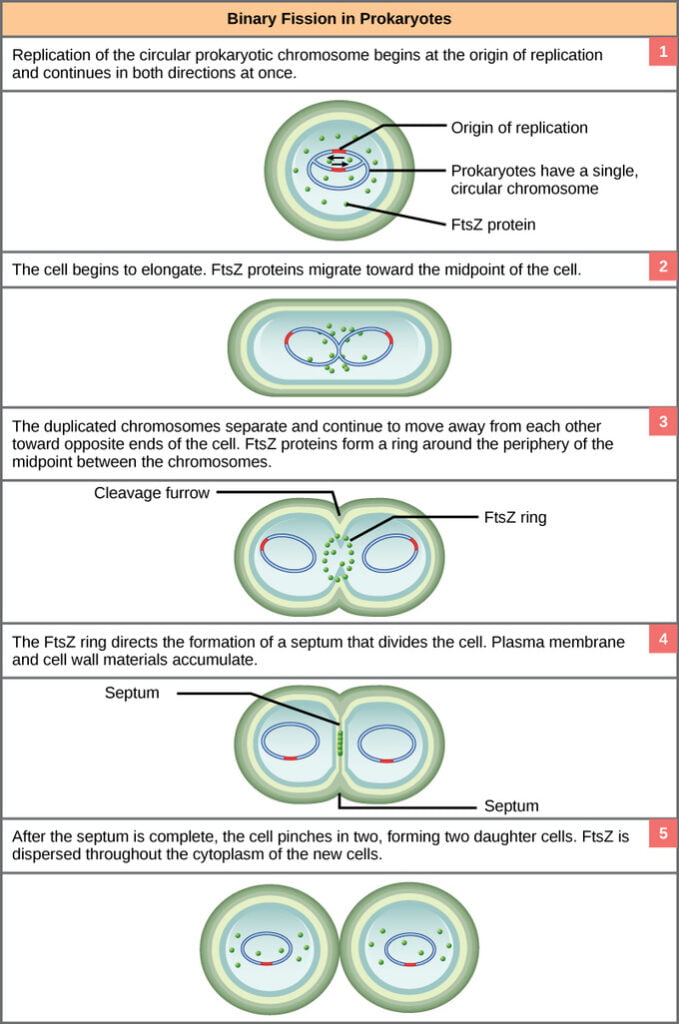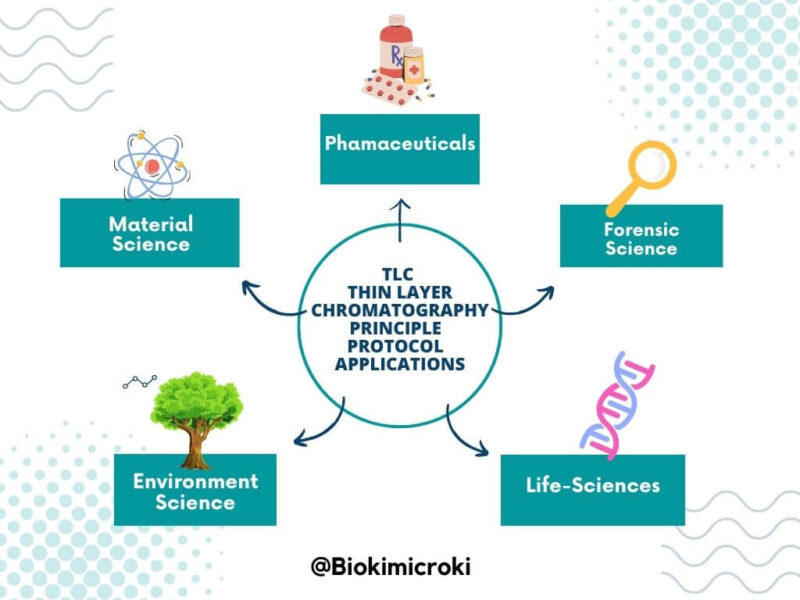Bacteria are prokaryotic unicellular organism. They reproduce asexually. Before dividing, bacteria need to replicate its genetic material in order to transfer the vital life process information to its next generation. The bacterial chromosome is present in cytoplasm in the form of nucleoid. Compared to eukaryotes, bacterial DNA is smaller and less complex. Due to which bacteria need less time for its DNA replication.
Bacteria reproduce by binary fission, where a bacterium divides itself into two daughter cells. It leads to form clones of the parental cell. The binary fission is simple and quicker than eukaryotic division and hence the bacterial population increases rapidly. In optimum conditions, E. coli multiplies in 20 minutes. In Binary fission type of reproduction, if environment is a favorable, bacterium grows in size, replicate its DNA and segregate the chromosome and lead to cytokinesis forming two daughter cells. These events are initiated and regulated by series of proteins. The Binary fission is intensively studied in E.coli. Research has found out FTsZ proteins plays a major role in assembling the cell division apparatus.
Steps of Binary fission –
- DNA replication –
Under sufficient nutrient and optimum physical condition, bacteria are metabolically active and produce energy. The produced energy is used for carrying out biological important molecular pathways like protein synthesis and DNA replication. In bacteria, the DNA is in the form of nucleoid in the cytoplasm. It is present in the supercoiled state. In order to replicate the DNA need to be uncoil. The DNA replication is initiated at the specific point called as origin. The DNA replication is a semi-conservative type where both the daughters cell receives one parental and one new polynucleotide strand.
2. Bacterial size and DNA segregation –
The DNA replication is followed by increase in bacterial size. It is due to the increase in cytoplasmic content and expansion of cell membrane and cell wall. The replicated closed circular chromosomes get separated and start travelling towards the opposite poles of the bacterial cell.
3. Cell division-
Once the replicated chromosome reached at the opposite ends of the elongated cell, the cell starts dividing by forming a septum. The division ensures that both daughter cells receive a copy of genome and some cytoplasmic material. The division of cytoplasm is called as cytokinesis. FtsZ proteins direct the cytokinesis process. The FtsZ proteins are synthesized and kept available in the early stage of cell division and retains till cytokinesis.
The FtsZ monomer proteins polymerize and assemble to form a Z ring. The ring proteins get associated with FtsZ binding proteins and some additional proteins forming a divisome. The divisome formation initiates septum formation with peptidoglycan and allowing daughters cells to divide.

Bacterial growth –
Under favorable nutritional and physical conditions the bacterial population is increased at regular internal of time. As a mother bacteria divided into two daughter cells, the pattern of growth is logarithmic or exponential. The bacterial growth progresses as 1, 2, 4, 8, 16, 32 etc. hence on general we can write its formula as 2n, where n is the number of generation. The time required for doubling the population is called as generation time. When bacteria grow in closed system or batch culture, it shows typical bacterial growth curve consisting of four phases namely lag, log, stationary and Death phase.
Similarities with Mitosis –
- Forms clone of parental cell.
- It follows 2n formula.
- Under favorable conditions it shows logarithmic growth.
- Cytokinesis occurs
Differentiation between Mitosis and Binary fission –
| Characteristic | Mitosis | Binary Fission |
| Type of cell | occurs in Eukaryotes | occurs in Prokaryotes |
| Reproductive process | No | Yes |
| Complexity | It is more complex than Binary fission | It is simple than Mitosis |
| Spindle formation | Yes | No |
| Protein involved in cell separation | Microfilament (tubulin) | FtsZ |
| Error rate | Chances of error is less due to checkpoints | No checkpoints hence chances of error is more |
| Chromosome segregation | It ensures equal distribution of chromosome | The distribution of chromosome in daughter cells may be unequal in some cases. |
References-
https://microbiologysociety.org/why-microbiology-matters/what-is-microbiology/bacteria.html
https://www.cell.com/fulltext/S0092-8674(00)81899-1
https://bio.libretexts.org/Bookshelves/Microbiology/Book%3A_Microbiology



Prokaryotic cell division happens through binary fission, but eukaryotic cell division can happen either through mitosis or meiosis. This is the main distinction between prokaryotic and eukaryotic cell division.